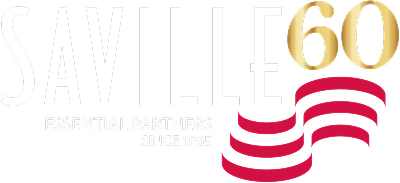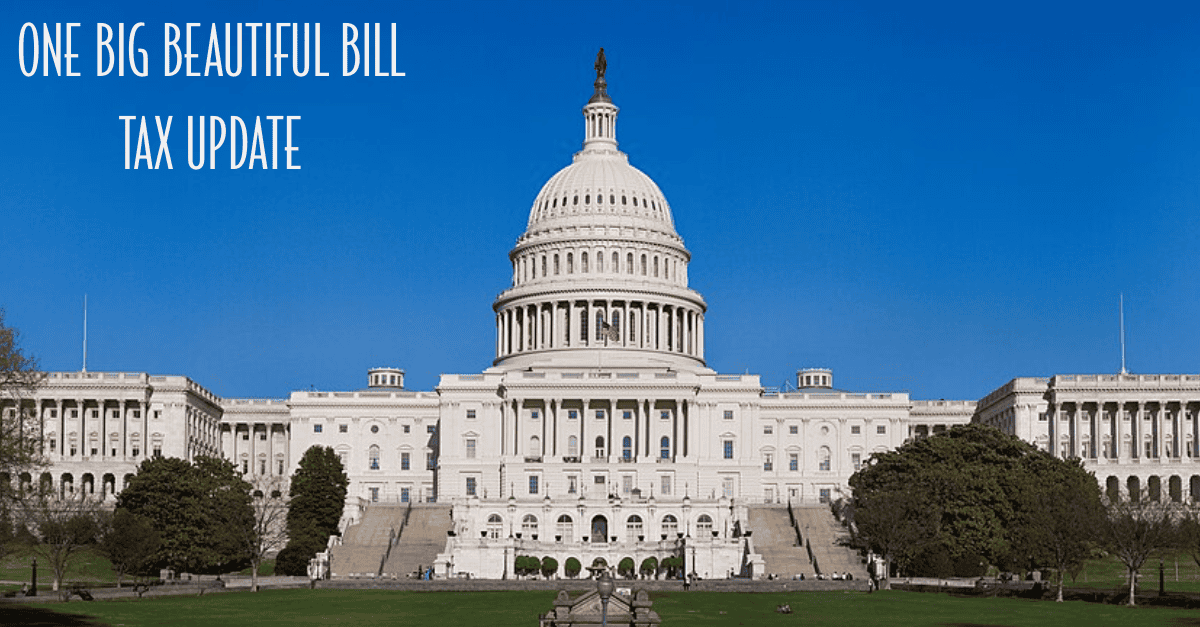Major Tax Changes: What the One Big Beautiful Bill Means for You
The One Big Beautiful Bill Act (OBBBA, H.R. 1, 2025) has officially become law, bringing sweeping
changes to the tax code that will affect millions of taxpayers and businesses. From enhanced
deductions to permanent rate extensions, this comprehensive legislation reshapes how Americans file
their taxes and plan their finances.
The new law includes provisions that take effect at different times, with some changes already in
place for 2025 while others kick in over the next few years. Understanding these changes is crucial
for making informed financial decisions and maximizing your tax benefits.
This guide breaks down the most significant provisions in the One Big Beautiful Bill, explaining
what they mean for individuals, families, and businesses. Whether you’re a parent claiming the
child tax credit, a business owner managing R&D expenses, or someone planning your estate, these
changes will likely impact your tax situation.
Individual Tax Changes Taking Effect in 2025
Enhanced Standard Deduction
The standard deduction receives a permanent boost under the new law. Single filers can now claim
$15,750, while married filing jointly can claim $31,500. Both amounts are indexed for inflation,
meaning they will increase automatically each year to account for inflation.
This change simplifies tax filing for millions of Americans who don’t itemize deductions. The
higher standard deduction reduces taxable income, potentially lowering your overall tax bill and
eliminating the need to track itemized expenses for many taxpayers.
New Senior Tax Benefit
While personal exemptions remain suspended for most taxpayers, the law introduces a $6,000
deduction specifically for taxpayers age 65 and older. This benefit is available through 2028 but
phases out at higher income levels.
The phaseout reduces the deduction by 6% of modified adjusted gross income over $75,000 for single
filers and $150,000 for joint filers. This targeted relief helps older Americans manage their
tax burden during retirement.
Improved Child Tax Credit
Families with children benefit from an increased child tax credit of $2,200 per qualifying child.
The credit is now permanent and indexed for inflation, providing long-term certainty for family tax
planning.
However, the law tightens eligibility requirements. Each child must have a valid Social Security
Number to qualify.
Enhancement of Adoption Credit
Up to $5,000 of the adoption credit is refundable, and the credit is indexed for inflation, making
adoption more affordable for families.
Modified SALT Deduction
The state and local tax (SALT) deduction cap increases to $40,000 for joint filers ($20,000 for
married filing separately) in 2025. This amount is indexed for inflation and includes a phase-down
for high-income taxpayers.
For tax years before 2030, the cap reduces by 30% of the excess modified AGI over $500,000
($250,000 for married filing separately), but won’t drop below $10,000. After 2029, the cap reverts
to $10,000.
Temporary Worker Relief
The law provides targeted relief for workers through several temporary deductions available from
2025 to 2028:
• Up to $25,000 in qualified tips can be deducted annually
• Overtime pay deductions up to $12,500 for single filers ($25,000 for joint filers)
• Car loan interest deductions up to $10,000 per year for new U.S.-assembled vehicles
These deductions include income phaseouts to target benefits toward middle-income taxpayers. The
car loan interest deduction reduces by $200 for each $1,000 of modified AGI over $100,000 ($200,000
for joint filers).
Business Tax Provisions
Research and Development Expense Relief
One of the most significant business changes restores full expensing for domestic research and
experimental (R&E) expenses. Since 2022, businesses have been required to capitalize and amortize
these costs over five years (15 years for foreign R&D), creating cash flow challenges and
complicating tax planning.
The new law allows for the immediate expensing of domestic R&D costs, starting in 2025. Businesses
can also accelerate previously capitalized R&D costs from 2022-2024, either deducting them fully in
2025 or spreading the deduction over two years.
Small businesses with average annual gross receipts of $31 million or less can apply this change
retroactively by filing amended returns for 2022-2024 and claiming full deductions for research and
experimental (R&E) expenses.
Enhanced Business Interest Deduction
The limitation on business interest expense is permanently calculated using EBITDA (earnings before
interest, taxes, depreciation, and amortization) rather than EBIT (earnings before interest and
taxes). This change increases the allowable deduction for many businesses by including depreciation
and amortization in the calculation.
Increased Section 179 Expensing
Small and medium-sized businesses can immediately expense more capital investments through
increased Section 179 limits. The expensing limit rises to $2.5 million, with a phaseout threshold
at $4 million. Both amounts are indexed for inflation.
Permanent Bonus Depreciation
The law makes 100% bonus depreciation permanent for qualified business property acquired after
January 19, 2025. This allows businesses to immediately deduct the full cost of eligible property,
improving cash flow and simplifying tax planning.
Changes Starting in 2026
Permanent Individual Tax Rates
The reduced individual income tax rates from the Tax Cuts and Jobs Act become permanent starting in
2026. This provides long-term certainty for individual taxpayers and eliminates the previous sunset
provision.
Enhanced Business Income Deduction
The qualified business income deduction (Section 199A) receives several improvements. The phase-in
threshold for wage and property limitations increases to $75,000 for single filers ($150,000 for
joint filers). The law also establishes a $400 minimum deduction for active business income, both
of which are indexed for inflation.
Alternative Minimum Tax Changes
Higher AMT exemption and phaseout thresholds become permanent, with modified inflation adjustments
and phaseout rates. This reduces the likelihood that middle-income taxpayers will face the
alternative minimum tax.
Mortgage Interest and Casualty Loss Updates
The $750,000 cap on mortgage interest deduction becomes permanent, and mortgage insurance premiums
are treated as deductible interest. Personal casualty loss deductions are limited to losses from
federally or state-declared disasters.
New Trump Accounts
The law creates “Trump Accounts” as new savings vehicles for children under the age of 18. Parents,
employers, or charities can contribute up to $5,000 annually. A government-funded
$1,000 pilot contribution is available for newborns from 2025-2028.
Estate and Gift Tax Changes
Increased Exemption
The basic exclusion amount for estate and gift tax permanently increases to $15 million, indexed
for inflation. This higher exemption applies to estates of decedents dying and gifts made after
December 31, 2025.
This change significantly reduces the number of estates subject to federal estate tax and provides
expanded opportunities for estate planning strategies.
Family and Education Benefits
Enhanced Child Care Credits
Multiple provisions support working families:
• The child and dependent care tax credit increases to a maximum 50% rate, phasing down to 35% at
$15,000 AGI and 20% at $75,000 AGI ($150,000 for joint filers)
• Employer-provided dependent care assistance exclusion increases to $7,500 ($3,750 for married
filing separately)
• The employer credit for provided childcare increases to 40% of qualified expenses (50% for small
businesses)
Charitable Giving
The above-the-line charitable deduction increases to $1,000 for single filers ($2,000 for joint
filers) and becomes permanent. This allows non-itemizers to benefit from charitable giving.
There is now a 0.5% floor on itemized charitable deductions. This means that only charitable
contributions exceeding 0.5% of the taxpayer’s adjusted gross income (AGI) are deductible. Any
contributions up to 0.5% of AGI are not deductible. However, there are carryforward rules that
allow excess contributions above the limit to be carried forward to future years
Starting in 2027, a new $1,700 federal tax credit becomes available for individual contributions to
state-approved scholarship-granting organizations for K-12 students.
International Tax Provisions
Controlled Foreign Corporation (CFC) Rules
Several changes affect multinational businesses:
• The look-through rule for related controlled foreign corporations becomes permanent
• Limitations on downward attribution of stock ownership reduce the number of foreign corporations
classified as CFCs
• The deemed paid foreign tax credit percentage increases from 80% to 90%
• Pro-rata Sub-part F income inclusions for shareholders owning stock of the CFCs during any tax
year
GILTI Modifications
The Global Intangible Low-Taxed Income (GILTI) regime is renamed “net CFC tested income,” and the
deemed return on tangible assets is repealed. This simplifies calculations while potentially
increasing the amount of income subject to U.S. tax.
Under pre-2026 law, GILTI that is subject to U.S. tax for corporations is taxed at an effective tax
rate of 10.5%. The new law permanently resets the GILTI effective rate at 12.6%, beginning in 2026.
Enacted FDII Changes
Under pre-2026 law, Foreign-Derived Intangible Income (FDII) that is subject to U.S. tax for
domestic corporations is taxed at an effective tax rate of just over 13.1%. The new law permanently
resets the effective FDII rate at 14%, beginning in 2026.
The new law also renamed FDII to FDDEI (Foreign-Derived Deemed Intangible Income) and streamlined
the formula required to calculate the new FDDEI.
Planning Considerations
The timing of different provisions means some benefits are available immediately while others
require longer-term planning.
The law’s complexity means professional guidance is more important than ever. Saville’s tax team
can help identify opportunities, ensure compliance with new rules, and develop strategies that
maximize benefits while minimizing risks.
As the IRS issues guidance and states determine their conformity with federal changes, we will
continue to provide updates. If you have any questions, please contact your Essential Partner at
Saville.

